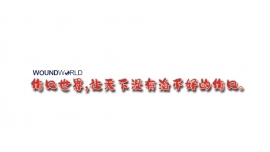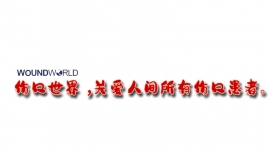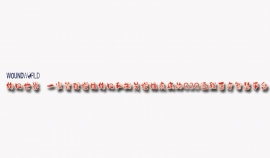
伤口世界

- 星期三, 24 1月 2024
DELIVERing reassurance that early eGFR reductions with SGLT2 inhibitors should not prompt drug discontinuation
A pre-specified secondary analysis of the DELIVER randomised controlled trial in 5788 people with heart failure with mildly reduced or preserved ejection fraction, with or without type 2 diabetes, explored the implications of early eGFR changes after initiation of dapagliflozin on later cardiovascular and renal risk. As expected, from baseline to 1 month, eGFR declines of >10% were more common in those actively treated with dapagliflozin than in those treated with placebo, occurring in 40% versus 25%. In placebo recipients, experiencing an initial eGFR reduction of >10% was associated with a higher risk of major adverse cardiovascular events. However, in those treated with dapagliflozin, although an initial eGFR reduction of >10% was common, this was not associated with adverse cardiovascular or renal outcomes compared to those treated with dapagliflozin who experienced smaller initial reductions in eGFR. The authors concluded that these findings reinforce the advice, based on earlier studies in those at high risk of cardiorenal disease, that SGLT2 inhibitors need not usually be discontinued or interrupted in response to an initial eGFR reduction. Other studies and editorials have concluded that routine monitoring of renal function is not required after initiating SGLT2 inhibitors unless volume depletion is considered a risk.
Pam Brown
GP in Swansea
Citation: Brown P (2023) Diabetes
Distilled: DELIVERing reassurance that early eGFR reductions with SGLT2 inhibitors should not prompt drug discontinuation. Diabetes & Primary Care 25: 205–7

- 星期二, 23 1月 2024
Breaking the cycle – Empowering healthcare professionals to overcome stigma in diabetes care
Deborah Christie
Professor of Paediatric and Adolescent Psychology, University College London Hospitals and Dartford and Gravesham NHS Trusts
Citation: Christie D (2023) Q&A: Breaking the cycle – Empowering healthcare professionals to overcome stigma in diabetes care. Diabetes & Primary Care 25: 183–6 Q&A
Article disclosure: This article describes research commissioned by Abbott, and Professor Christie was paid a fee by Abbott to contribute to this article. The views expressed are those of the author and not necessarily those of Abbott. The article was commissioned by the Editorial Board as a topic of interest. The journal has received no funding, and all peer review and editorial decisions have been made independently and according to the journal’s usual procedures.
Citation: Christie D (2023) Q&A: Breaking the cycle – Empowering healthcare professionals to overcome stigma in diabetes care. Diabetes & Primary Care 25: 183–6

- 星期五, 19 1月 2024
Assessment of chronic wound patients’ journey in India: a survey of the perspectives of healthcare professionals and patients
Background: Chronic wounds fail to progress through a normal sequence of repair. This study aimed to evaluate the chronic wound patient journey among healthcare professionals (HCPs) and patients in Indian settings.
Methods: A survey questionnaire was framed, including patient burden, initial diagnosis and treatment preference, referral pathway, challenges, and unmet needs of HCPs and patients.
Results: A total of 100 HCPs and 30 patients participated in the survey. The primary challenges faced by the patients include high treatment costs and accessibility to healthcare centres while HCPs reported high treatment cost and lack of awareness as challenges. Affordable treatment options and lack of awareness were cited as prime unmet needs by both HCPs and patients.
Conclusion: The use of adapted products and early initiation of treatment can aid in faster wound healing and can be cost-effective.
Authors:
Arun Bal, Sanjay Vaidya, Rajiv Parakh, Vivekanand, Pavan Belehalli, Madhu Periasamy, Jessy Thomas, Bharat Kotru, Beulah Priyadharshini D R, Venugopal K and Pratik Bhide
Arun Bal is Consultant Diabetic Foot Surgeon, S L Raheja Hospital, Mumbai, India;
Sanjay Vaidya is Consultant Plastic Surgeon, S L Raheja Hospital, Mumbai, India;
Rajiv Parakh is Consultant– Peripheral Vascular and Endovascular Surgery, Medanta Hospital, Gurugram, India;
Vivekanand is Consultant Vascular Surgeon, BMJ Hospital, Bangalore, India;
Pavan Belehalli is Orthopaedic Surgeon, KIER, Bangalore, India;
Madhu Periasamy is Consultant Plastic Surgeon, Ganga Hospital, Coimbatore, India;
Jessy Thomas is Surgeon – Podiatry, Hiranandani Hospital, Mumbai, India;
Bharat Kotru is Podiatrist and Wound Care Specialist, Max Hospital and Amandeep Hospital, Amritsar, India;
Beulah Priyadharshini D R is Medical Affairs Manager – India, Urgo Medical;
Venugopal K is Medical Affairs & Training Specialist – India, Urgo Medical;
Pratik Bhide is Managing Director, India, Urgo Medical

- 星期四, 18 1月 2024
An unexpected infection in a venous leg ulcer: a case report
Providencia rettgeri is a Gram-negative bacillus that is most usually seen in urinary tract infections. Skin and soft tissue infections with P rettgeri are rare and there few case reports described in the literature. A 43-year old woman presented to the emergency department with a leg ulcer of 3 months duration. Microbiological results isolated P rettgeri and Pseudomonas aeruginosa. She underwent surgical debridement and split-thickness skin grafting alongside IV antibiotic therapy and dressing care, with complete resolution of the wound 3 months after admission. The differential diagnosis of leg ulcers is wide and must include infection and venous insufficiency. Although venous ulcers are common, typically they are not responsible for rapid evolving ulcers that destroy tissues below the muscular fascia. In this case report, the authors hypothesise that P rettgeri had a major role in the severity of the ulcer in an otherwise healthy woman. A greater understanding of how P rettgeri affects wound pathophysiology is needed in order to distinguish between colonisation versus infection and discriminate bacterial synergy, as well as having better treatment guidelines.
Authors:
Miguel Veríssimo, Diogo Guimarães, Diogo Casal, Sara Carvalho, Miguel Matias, Raquel Barbosa and Joaquim Bexiga
Miguel Veríssimo is Resident. Diogo Guimarães is Resident. Diogo Casal is Attending Physician. Sara Carvalho is Attending Physician. Miguel Matias is Resident. Raquel Barbosa is Resident. Joaquim Bexiga is Attending Physician. All at Plastic Surgery Department, Centro Hospitalar Universitário Lisboa Central, Lisbon, Portugal.

- 星期二, 16 1月 2024
Best Practice Statement Development of a wound care formulary using clinical evidence and ensuring effective change management
What makes a good formulary?
The importance of evidencebased practice
Considering cost
Change management
Addressing challenges and
measuring success
BEST PRACTICE STATEMENT: DEVELOPMENT OF A WOUND CARE FORMULARY USING CLINICAL EVIDENCE AND ENSURING EFFECTIVE CHANGE MANAGEMENT
PUBLISHED BY:
Wounds UK
A division of Omniamed Communications, 108 Cannon Street London EC4N 6EU, UK www.wounds-uk.com
This document has been developed by Wounds UK and is supported by an unrestricted educational grant from Urgo Medical.
This publication was coordinated by Wounds UK with the Expert Working Group and Review Panel. The views presented in this document are the work of the authors and do not necessarily
How to cite this document:
Wounds UK (2023) Best Practice Statement: Development of a wound care formulary using clinical evidence and ensuring effective change management. Wounds UK, London. Available to download from: www.woundsuk.com reflect the views of Urgo Medical.
EXPERT WORKING GROUP:
Jacqui Fletcher OBE (Chair), Independent Nurse Consultant
Andrew Sharpe, Advanced Podiatrist, Wound Care, Salford Care Organisation, Salford
Caroline Dowsett, Clinical Nurse Specialist, Tissue Viability Services, East London NHS Foundation Trust
David Wylie, Managing Director, DAWN Health & Care Consultancy UK Ltd; Honorary Fellow, Glasgow Caledonian University, Glasgow
Dawn Douglas, Community Matron, Northumbria Healthcare NHS Foundation Trust
Graham Bowen, Principal Podiatrist, Solent NHS Trust
Hollie Robinson, Tissue Viability Service Lead, South Warwickshire NHS Foundation Trust
Joy Tickle, Tissue Viability Nurse Consultant, Isle of Wight NHS Trust
Kelly Phillips, Skin Integrity Lead Nurse, Doncaster and Bassetlaw Teaching Hospitals NHS Foundation Trust
Leanne Atkin, Vascular Nurse Consultant, Mid Yorkshire NHS Trust; Research Fellow, University of Huddersfield
Michelle Goodeve, Senior Diabetes Specialist Podiatrist, Provide Community Interest Company
Nina Murphy, Operational Lead for Tissue Viability, North East London NHS Foundation Trust
Rebecca Elwell, Trustee, British Lymphology Society; Macmillan Lymphoedema ANP and Team Leader, University Hospitals of North Midlands NHS Trust
Sian Fumarola, Head of Clinical Procurement, North Midlands and Black Country NHS Procurement Group

- 星期一, 15 1月 2024
Updates in the management of cardiovascular disease
Jane Diggle
Specialist Diabetes Nurse
Practitioner, West Yorkshire
Citation: Diggle J (2023) Updates in the management of cardiovascular disease. Diabetes & Primary Care 25: 145–7
